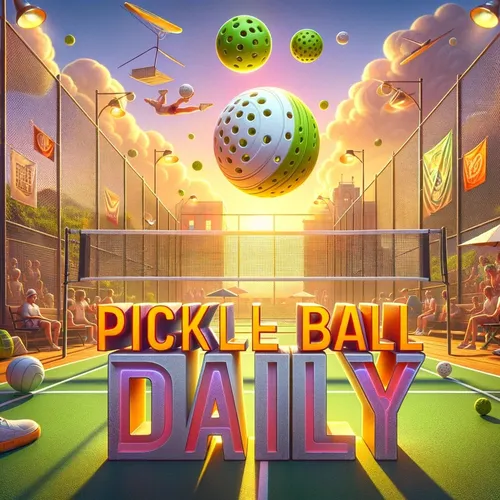"Pickle Origins: How A Backyard Game Became A Sport"
- Author
- Quiet. Please
- Published
- Sat 06 Sep 2025
- Episode Link
- https://www.spreaker.com/episode/pickle-origins-how-a-backyard-game-became-a-sport--67656241
On September 6 in pickleball history, one interesting and significant event occurred in the late 1960s related to the establishment of pickleball as an organized sport. Although the exact date September 6 is not widely noted for the invention itself, this period marks the time shortly after the game’s invention in 1965 when the sport was taking steps toward formalization and expansion.
During the summer of 1965, Joel Pritchard, Bill Bell, and Barney McCallum created pickleball on Bainbridge Island in Washington by combining elements of badminton, ping-pong, and tennis, playing with improvised equipment including ping-pong paddles and a perforated plastic ball. What followed were key moments shortly thereafter that set the foundation for the sport we know today.
By 1967, the first permanent pickleball court was built in the backyard of a friend of Joel Pritchard, marking the birth of designated playing spaces for pickleball. Then, in early 1968, Joel Pritchard, along with Barney McCallum’s son David and others, formed Pickle Ball Incorporated to promote and sell equipment such as paddles and nets. This helped transition pickleball from a backyard novelty into an emerging organized sport.
The naming of pickleball also remains a memorable historical story tied to this early era around this date. Joel Pritchard’s wife, Joan, named the sport “pickleball” reportedly after the pickle boat in crew racing which is a boat made up of leftover rowers from other crews, symbolizing the sport’s hybrid origins. This naming story has been clarified much later to dismiss the popular myth that it was named after the family dog Pickles, who was actually born three years after pickleball was invented.
Post-1965 to this early September stretch in the late 1960s, pickleball gained momentum with rapid local popularity in Washington state as neighbors and families embraced the game. Manufacturing of wooden paddles and marketing of the sport helped it spread gradually beyond the Pacific Northwest to warmer climates like Arizona and California through the 1970s.
What makes this period so significant around early September is the early growth phase, where pickleball was no longer just a casual weekend game but evolving in its identity, infrastructure, and industry. By the end of the 1960s, the foundational work was done – rules were documented, equipment standardized, programs for distribution set up, and the community of players expanded.
This timeframe encapsulates the spirit of pickleball’s birth and rise—creative invention, community involvement, playful experimentation, and the beginning of a remarkable journey that would see pickleball become one of the fastest-growing sports globally.
Thank you for tuning in to this glimpse into pickleball history. If you enjoyed learning about this formative period of pickleball, be sure to subscribe for more fascinating stories from the sport’s rich past. This has been a quiet please production, for more check out quiet please dot ai.
Some great Deals https://amzn.to/49SJ3Qs
For more check out http://www.quietplease.ai
